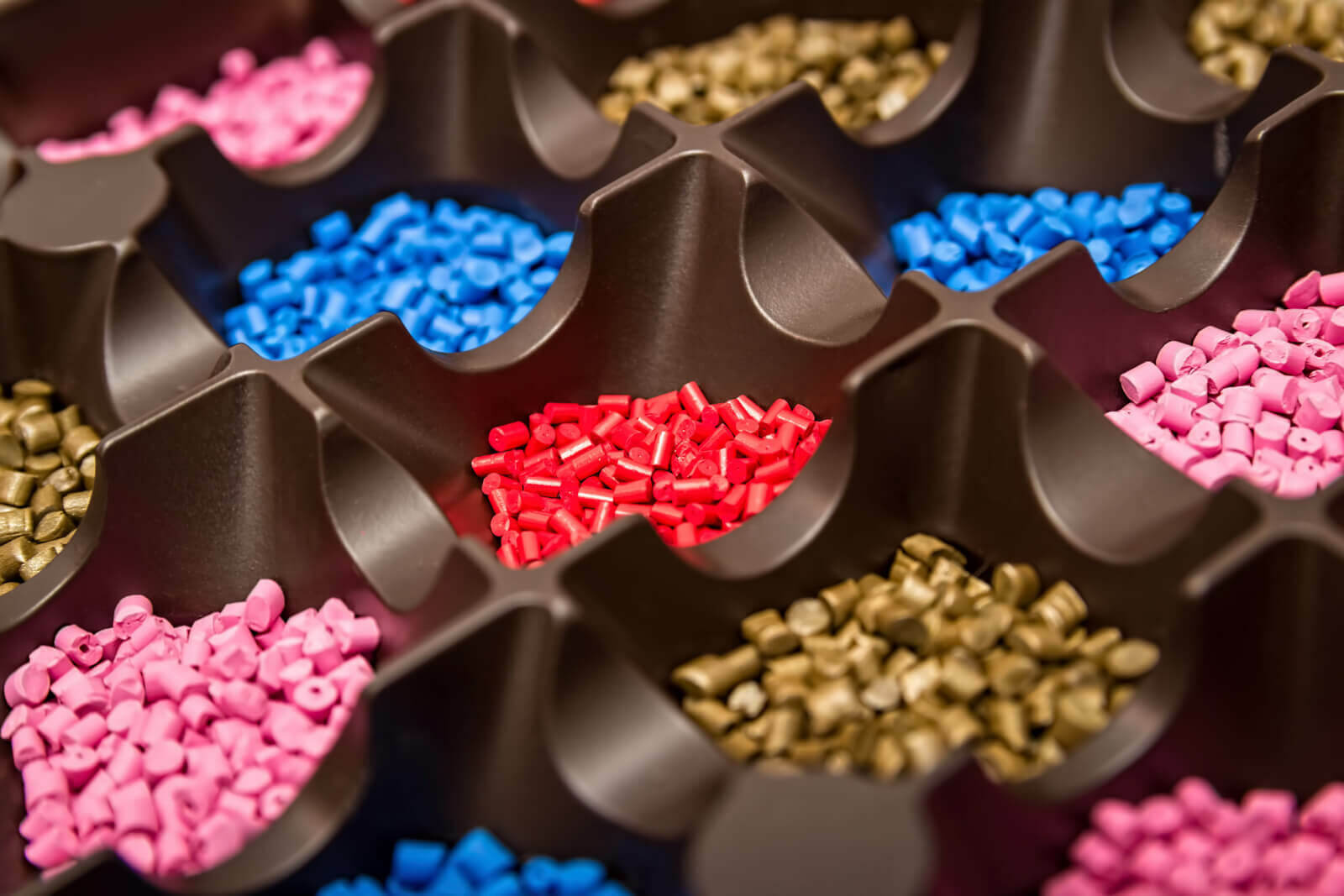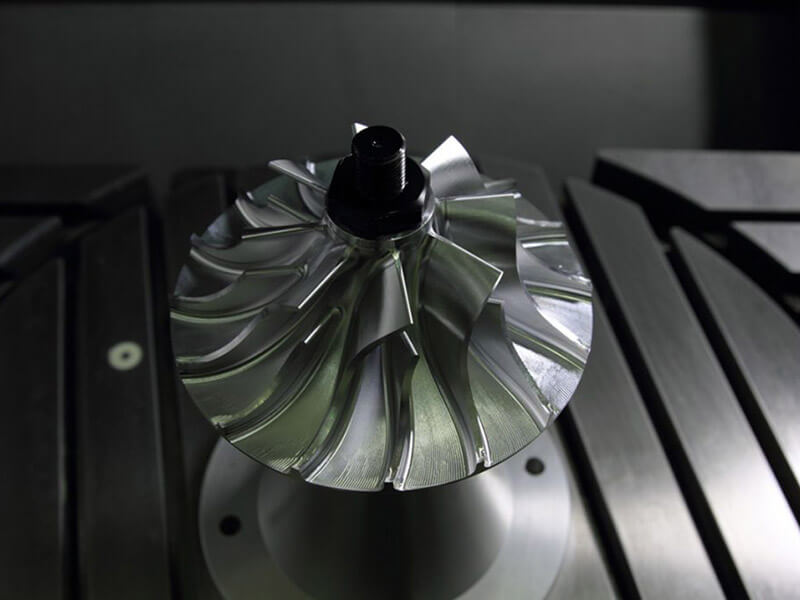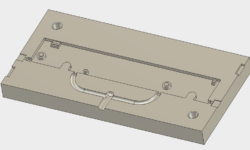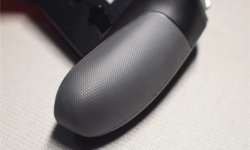Thanks to its material versatility and efficiency, injection molding is the most widely used manufacturing process for plastic parts. It is most commonly used to process thermoplastic polymers, but can also be used for thermosets and elastomers.
Injection molding is also one of the best manufacturing processes for processing polymer blends. Polymer blends are mixtures of two polymer materials that, together, can provide unique advantages such as improved material characteristics, cost savings, or recyclability. More than a third of commercial polymer production is the production of blends, and the majority of these polymer blends are made specifically for injection molding, as the process is highly suited to these materials.
This article will examine how polymer blends can be used in injection molding. It looks at different types of polymer blends and their unique applications, as well as the processes used to mix different polymers together.
What is a polymer blend?
A polymer blend is a mixture of two polymers where the secondary polymer represents at least 2% of the total volume.
Polymer blends are widely produced because they offer advantages to both the material manufacturer and the customer. Blending pre-produced polymers allows production plants to be more flexible with their production and manufacture fewer grades overall, while the availability of blends allows part manufacturers, engineers, and other customers to improve specific properties of parts and obtain other advantages at a low cost.
Categories of polymer blends
There are a large number of polymer blends available, and these blends can be categorized in different ways. One way is to classify the blend by the type of each constituent polymer, resulting in five blend types:
- Thermoplastic-thermoplastic blends
- Thermoplastic-elastomer blends
- Thermoplastic-thermoset blends
- Elastomer-thermoset blends
- Polymer filler blends
Polymer blends can also be divided into those that are mixable and the molecular level and those that are not. This results in two further distinct categories:
- Miscible blends (homogenous)
- Immiscible blends (heterogenous)
Most commercial polymer blends are immiscible and possess a phase-separated structure. This has advantages and disadvantages. On the positive side, it allows for each polymer in the blend to retain its unique characteristics. On the other hand, it means any parts molded from the blend will have weaknesses between the different phases.
Injection molding of polymer blends
Injection molding can be used for a wide variety of polymers, though each material will have its own unique temperature, pressure, and clamping requirements. The manufacturing process is also suited to the molding of polymer blends.
There are different ways to achieve injection molding of polymer blends. One is to purchase blends in pellet form from the material manufacturer. This is standard for the most common polymer blends such as PC/ABS. Another method is to blend two separate polymers immediately prior to injection molding. This is typically done with high-precision equipment such as a gravimetric blender, which weighs and meters the required materials, ensuring a precise ratio. Such equipment is also useful for adding colorants and additives in precise quantities. Regardless of the mixing process, a reciprocating screw injection molding machine works best for blends.
Of course, blended polymers do not behave in exactly the same way as single polymers, since the majority of blends used in injection molding are not mixed at the molecular level and therefore have separate phases. One result of this is that polymer blends are more susceptible to weld lines — imperfections caused by the separation of the melt front — than single polymers.
Molding of polymer blends is distinct from co-injection molding, which involves the injection of two separate polymers but does not encourage their mixing. Instead, one polymer forms the “core” of the molding and the other forms the “skin.” This can be useful for making parts with, for example, high-quality visible exteriors and low-cost interiors.
Common polymer blends and their applications
Polymer blends are widely used in the injection molding process as they can deliver advantages such as reduced production costs and material benefits like chemical resistance. In this section we will examine some popular polymer blends and their applications in injection molding.
Automotive
Polymer blends are widely used in the automotive industry, particularly those offering characteristics like impact resistance, temperature resistance, and good strength-to-weight ratio. Some of the most widely used blending polymers include PPE, PE, PC, and PA (nylons).
PC/ABS
With a low density and a high level of toughness, the common polymer blend of PC/ABS is hugely popular in the automotive industry, as well as other sectors. It can be used for a range of internal, external, and under-the-hood components, such as bumpers, door panels, rocker panels, front indicator housings, rear wheel covers, and trims.
PPE/PA
A blend of polyphenylene ether and nylon can result in excellent chemical resistance, heat resistance, and strength suitable for exterior and under-the-hood components. In the automotive industry, such blends can be used for parts such as under-the-hood electrical connectors, resonators, and air ducts, as well as critical exterior components like body panels and front fender panels.
Medical
The medical industry regularly uses injection molded polymer blends for a wide variety of applications. Key considerations in this industry are chemical resistance, sterilizability, and compliance with FDA and other regulations.
PPE/PS
Blends of polyphenylene ether and polystyrene can offer desirable characteristics such as heat resistance, water resistance, and sterilizability via various methods, including gamma radiation. These blends can be used for reusable medical devices such as IV components, dialysis tubes, and housings for devices like oxygenators.
PEI blends
PEI blends like PEKK/PEI and PEEK/PEI are more expensive than PPE/PS but offer advantages in the medical industry such as very high heat resistance and lipid resistance. Their lipid resistance makes them suitable for IV sets and stopcocks, as well as autoclave-sterilizable components.
Electrical & electronics
Polymer blends are valuable in production of electrical and electronic (consumer and commercial) parts, where manufacturer priorities may include lightweighting, design freedom, and reduced scrap. In addition to aforementioned blends like PC/ABS and PPE/PS, manufacturers of electronics components may use blends like PBT/PC due to its good tensile strength, creep resistance, and ability to be painted.
PBT/PC
A blend of polybutylene terephthalate and polycarbonate provides a good level of mechanical strength, toughness, heat resistance, and UV resistance. The material is useful for components in electrical boxes, smoke detectors, power tools, lighting, and other applications.
PVC blends
Polymer blends that contain PVC can be valuable in electrical and electronics applications due to their low level of flammability. When blended with a styrenic polymer like PS, PVC can be used to make various electronic or electrical housings (for appliances, consumer electronics, etc.).
Injection molding blends with 3ERP
Injection molding is a highly valuable manufacturing process, partly because it allows the use of polymer blends, which give engineers access to a wider range of material properties. 3ERP, an injection molding specialist, can make injection molded parts in common blends like PC/ABS and PS/PPE and can order custom materials on demand.
Contact us today for a free quote when you want to order injection molded parts.








